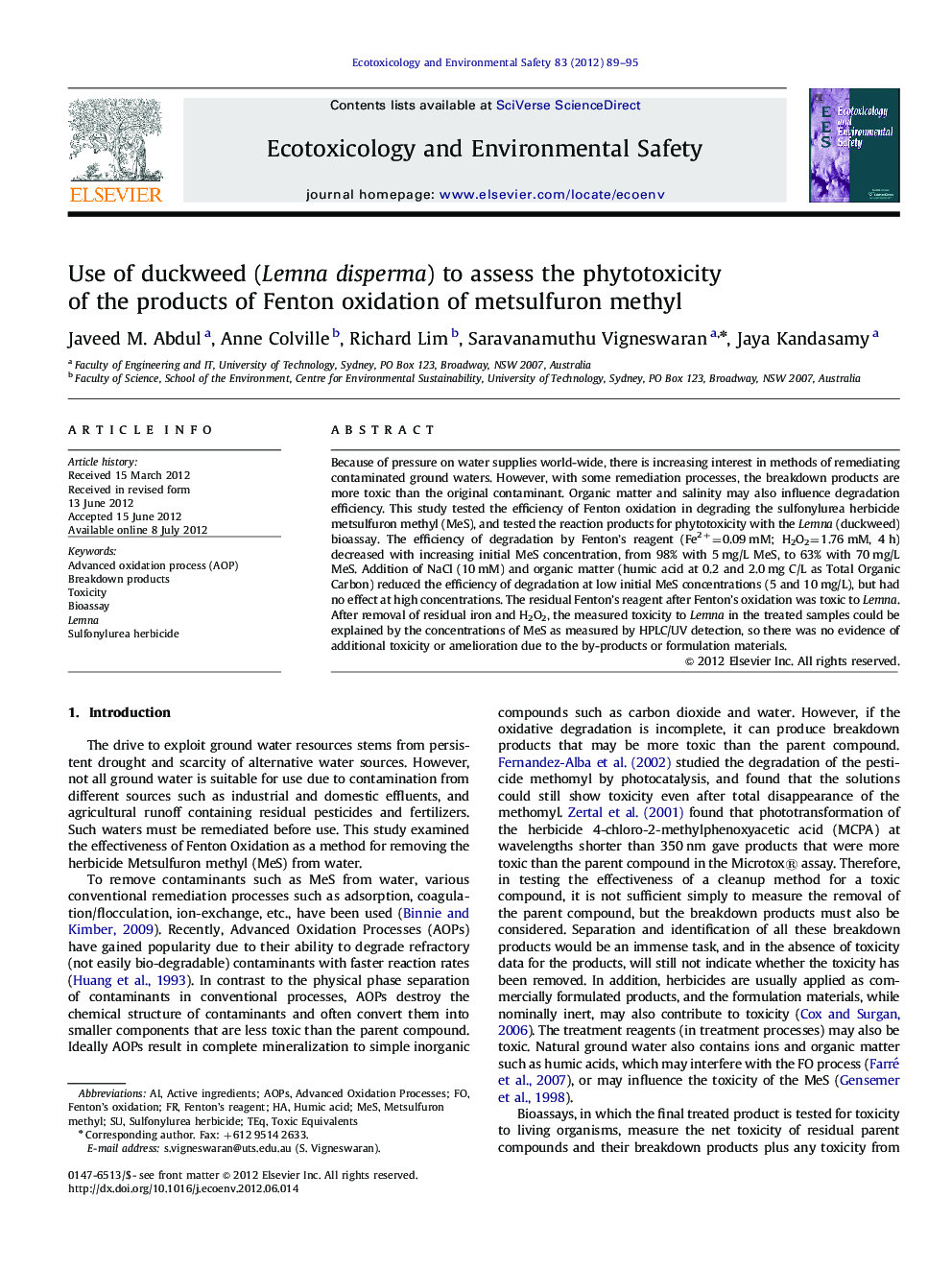| کد مقاله | کد نشریه | سال انتشار | مقاله انگلیسی | نسخه تمام متن |
|---|---|---|---|---|
| 4420833 | 1618980 | 2012 | 7 صفحه PDF | دانلود رایگان |

Because of pressure on water supplies world-wide, there is increasing interest in methods of remediating contaminated ground waters. However, with some remediation processes, the breakdown products are more toxic than the original contaminant. Organic matter and salinity may also influence degradation efficiency. This study tested the efficiency of Fenton oxidation in degrading the sulfonylurea herbicide metsulfuron methyl (MeS), and tested the reaction products for phytotoxicity with the Lemna (duckweed) bioassay. The efficiency of degradation by Fenton's reagent (Fe2+=0.09 mM; H2O2=1.76 mM, 4 h) decreased with increasing initial MeS concentration, from 98% with 5 mg/L MeS, to 63% with 70 mg/L MeS. Addition of NaCl (10 mM) and organic matter (humic acid at 0.2 and 2.0 mg C/L as Total Organic Carbon) reduced the efficiency of degradation at low initial MeS concentrations (5 and 10 mg/L), but had no effect at high concentrations. The residual Fenton's reagent after Fenton's oxidation was toxic to Lemna. After removal of residual iron and H2O2, the measured toxicity to Lemna in the treated samples could be explained by the concentrations of MeS as measured by HPLC/UV detection, so there was no evidence of additional toxicity or amelioration due to the by-products or formulation materials.
► Fenton oxidation can remove pollutants like metsulfuron methyl herbicide from water.
► Are the degradation products, formulation or reagents phytotoxic?.
► Toxicity of Fenton-treated metsulfuron methyl was quantified by Lemna bioassays.
► Observed toxicity was due to residual Fenton reagent and parent herbicide.
► Degradation products and herbicide formulation materials were not toxic.
Journal: Ecotoxicology and Environmental Safety - Volume 83, 1 September 2012, Pages 89–95